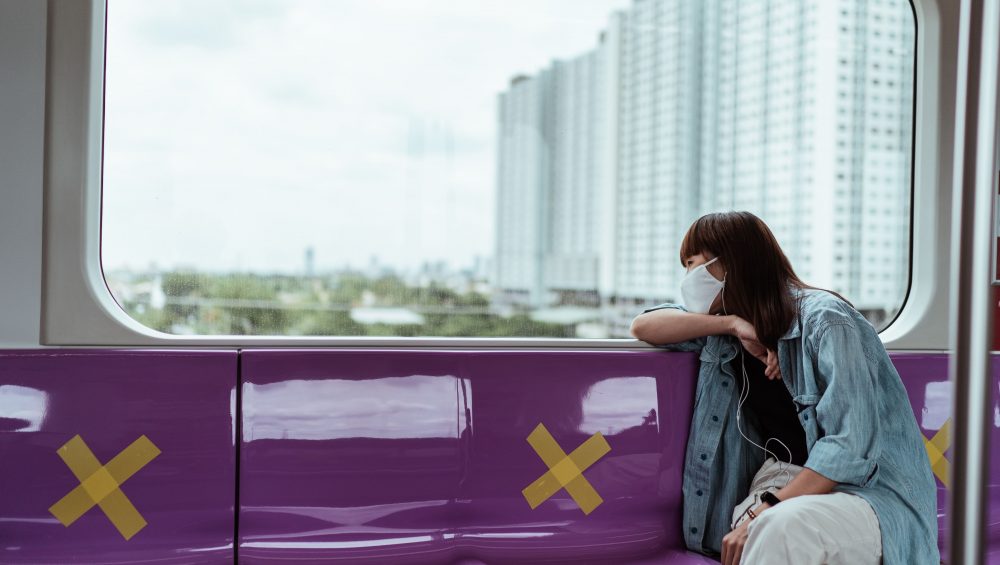The global pandemic has changed the way we move and interact with others. While stay-at-home orders, travel restrictions and physical distancing measures are enforced in many places across the world to slow down the spread of COVID-19, it is inevitable for most people to hit the road so they can buy their essentials, go to work and run errands.
While the privileged ones can drive their own private cars to go places conveniently, not everybody has the luxury to do that, especially in a developing country like the Philippines. Others are rediscovering their love for cycling or trying it out for the first time during the pandemic. Active transportation like biking and walking are highly encouraged because of the health and environmental benefits it entails. However, a lot of commuters are still dependent on public transport to move from one place to another due to its affordability and accessibility.
Passengers packed like sardines inside buses, trains, jeepneys and UV Express vans at rush hour, agonizingly long lines in terminals and hellish traffic jams are common scenarios during the daily commute of a typical Filipino in the metropolis. Amid the coronavirus pandemic, this infamous congestion can pose a greater risk of transmission because of the confined spaces and limited ventilation in public transportation vehicles. Given the minimal space in such crowded environments, social distancing can be difficult to maintain for the commuters.
To protect ourselves and others from the deadly virus, we are advised to adhere to the minimum public health standards when commuting, especially with the gradual easing of quarantine restrictions. According to the Omnibus Guidelines on the Implementation of Community Quarantine in the Philippines, public transportation (road, rail, maritime and aviation) is allowed to operate within the capacity and protocols that comply with the Department of Transportation’s guidelines.
For a safer commute during the COVID-19 pandemic, we listed down some tips and recommendations from the World Health Organization (WHO), Centers for Disease Control and Prevention (CDC), Department of Health (DOH) and Department of Transportation (DOTr) that passengers should observe when using public transit.
WEAR YOUR FACE MASK PROPERLY
Masks save lives. Together with preventive measures like physical distancing, cleaning your hands and getting vaccinated, wearing a mask can help slow the spread of COVID-19. It works in two ways – masks protect yourself as well as the people around you from contracting the virus. To get the full benefits, always remember that they should be worn properly, covering your nose, mouth and chin. Your mask should fit snugly on your face with no gaps to prevent the leakage of air. The CDC recommends using medical procedure masks (also known as surgical masks/disposable face masks) or cloth masks made with tightly woven and breathable fabric. Masks with two or three layers and those with inner filter pockets are also said to be more effective. Since April last year, it’s been mandatory for people in the country to wear face masks in public places, including passengers who use public transport. In the Philippines, wearing of face shields on top of protective masks is also required both indoors and outdoors.
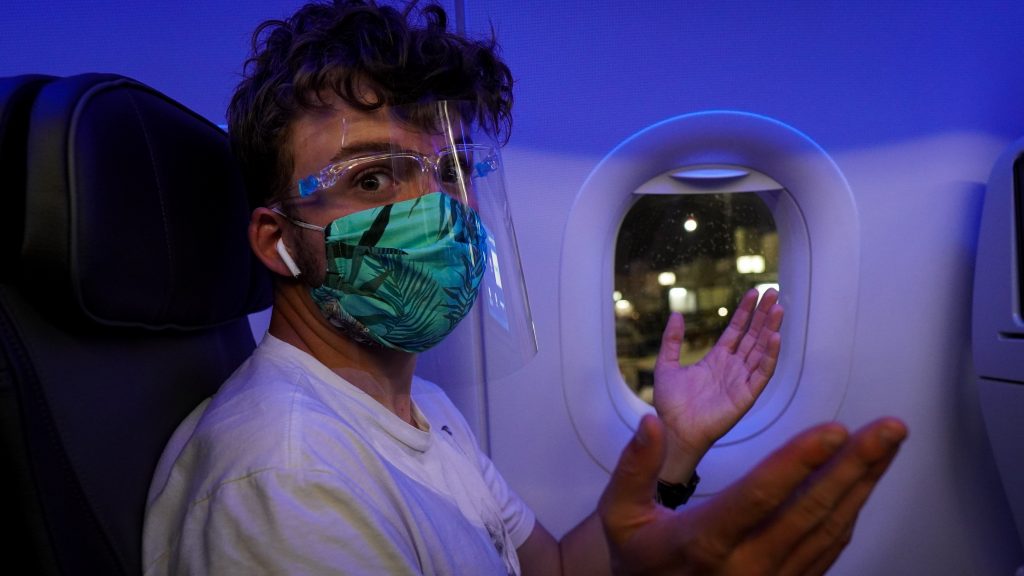
PRACTICE PHYSICAL DISTANCING
If possible, avoid travelling during peak hours to stay away from big crowds. Also consider choosing a vehicle where social distancing is feasible. Always keep a safe distance from others, whether you’re lining up at the bus station or sitting on a train. According to the CDC, it’s advisable to stay at least two meters or six feet away from people who are not from your household. As much as possible, avoid ride-sharing where the carpool driver picks up several passengers from different households.
The WHO recommends maintaining at least 1-meter distance between yourself and other commuters: “To the extent possible, keep a distance of at least 1 meter from other passengers when purchasing tickets, waiting to board public transport, and moving around public transport stations (e.g. using escalators).”
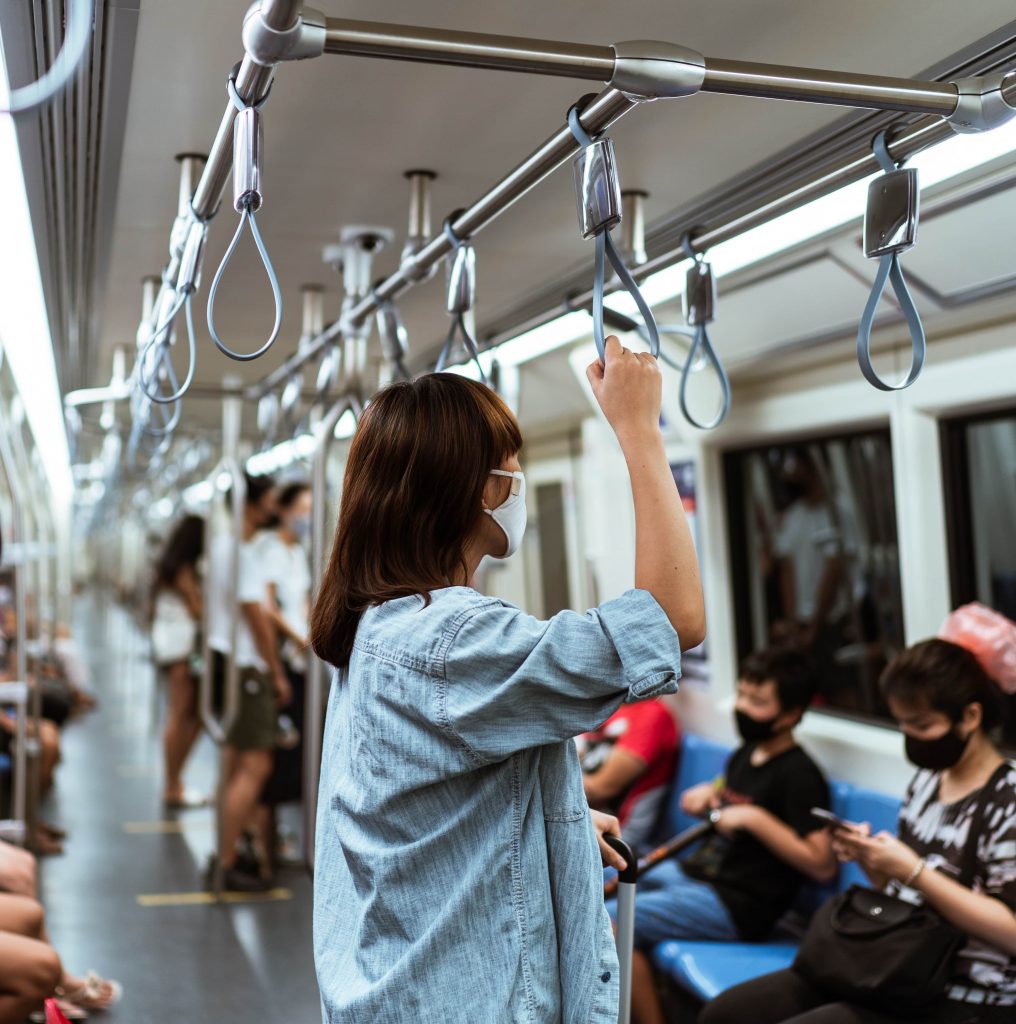
PRACTICE PROPER HAND HYGIENE AND RESPIRATORY ETIQUETTE
Make it a habit to wash your hands with soap and water for at least 20 seconds or apply hand sanitizer with at least 60% alcohol before using any mode of transportation, after leaving the vehicle or transit station, and as soon as you arrive at your destination, according to the CDC. You also shouldn’t touch your eyes, nose and mouth if you haven’t washed your hands. The WHO also recommends covering your mouth and nose with your bent elbow or a tissue when you cough or sneeze. Throw the used tissue in a closed trash can as soon as possible, and immediately wash your hands with soap and water for at least 20 seconds or put on hand sanitizer that contains at least 60% alcohol.
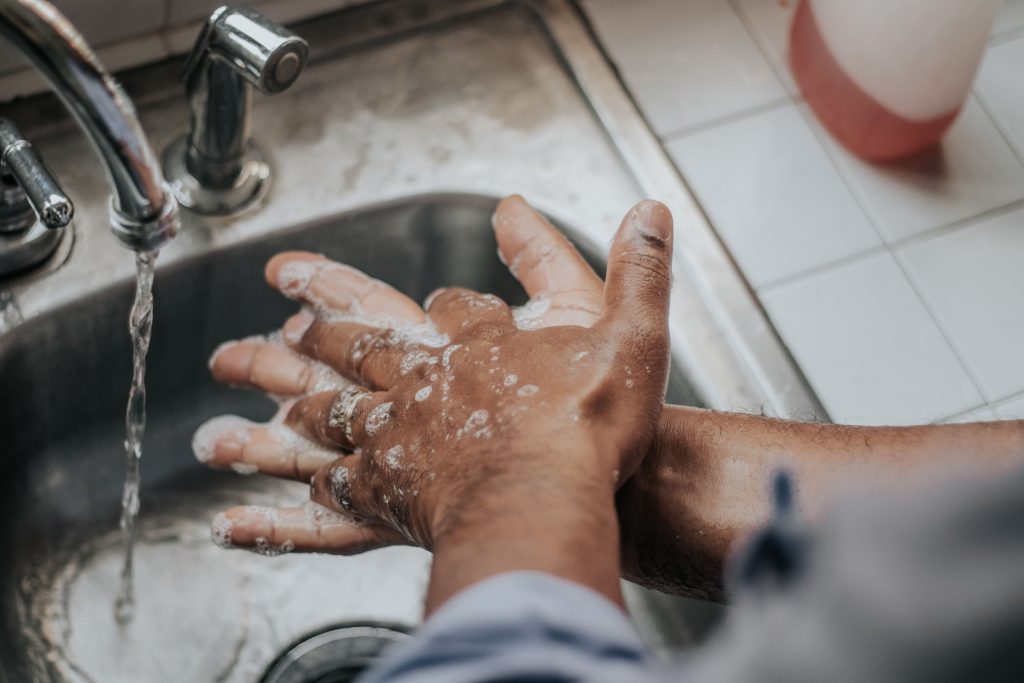
NO EATING, DRINKING AND TALKING
The Philippine government has banned eating, talking, and answering phone calls inside public transport, as stated in DOTr’s so-called “Seven Commandments” for passengers, drivers and operators. The CDC recommends that passengers should refrain from eating or drinking when using public transit to make sure that their mask is on at all times. Eat or drink before/after the ride or outside the vehicle when other people are not in close proximity. Make sure to clean your hands properly with soap and water or apply alcohol-based hand sanitizer (if soap and water are not available) before eating.
We also have to consider that COVID-19 can be transmitted between people via small liquid particles—respiratory droplets and aerosols—from an infected individual’s mouth or nose when he or she coughs, sneezes, speaks, sings or breathes, according to the WHO. Hence, the policy on not talking or taking phone calls while on public transport makes sense.
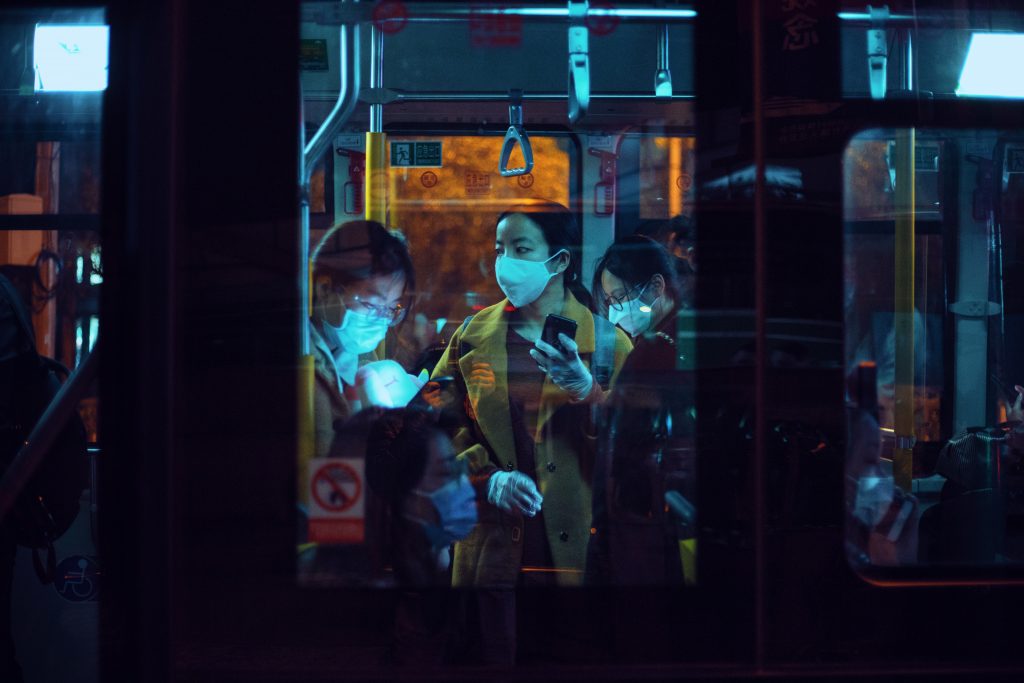
AVOID POORLY VENTILATED AREAS
New guidelines for public transport and workplaces were issued by the Department of Labor and Employment this year, underscoring the importance of proper ventilation to help prevent the spread of the virus. On your part as a passenger, try to avoid crowded and confined spaces with bad ventilation as these can be a COVID-19 hotspot. If you’re taking a taxi or carpool, ask the driver to open the windows in the vehicle to improve ventilation.
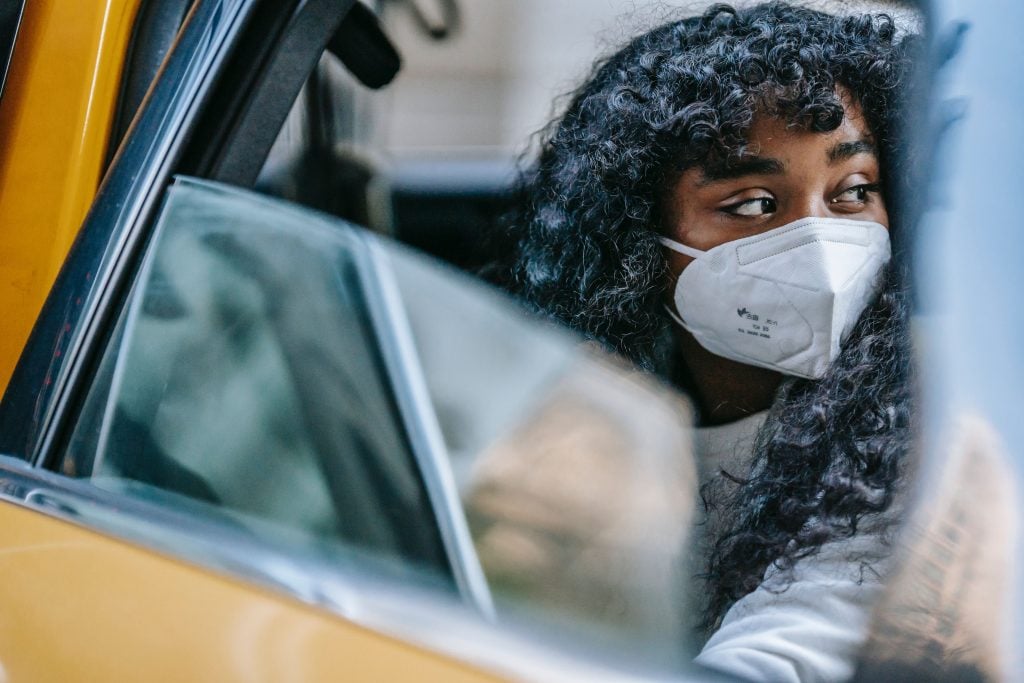
BRING ADEQUATE SUPPLIES WHEN GOING OUT
Before leaving the house, don’t forget to carry with you a bottle of alcohol-based hand sanitizer and some sanitizing or anti-bacterial wipes. Don’t be shy to disinfect your seat when riding a jeepney or a bus. Also, bring extra face masks in case the mask you are wearing gets dirty while traveling.

AVOID TOUCHING SURFACES
Any contact with frequently touched surfaces in public transit like handrails, turnstiles, kiosks, touchscreens, armrests, and elevator buttons should be avoided. In case you need the support of handrails during the ride or when climbing the stairs, you can use disposable tissue paper and throw it immediately afterward in a closed trash bin. It’s also important to avoid touching your eyes, nose and mouth with unwashed hands. If you touch the surfaces, wash your hands with soap and water for 20 seconds or use a hand sanitizer that has at least 60% alcohol as soon as possible, says the CDC. Using contactless payment methods is also encouraged to limit touching cash or ticket machines.
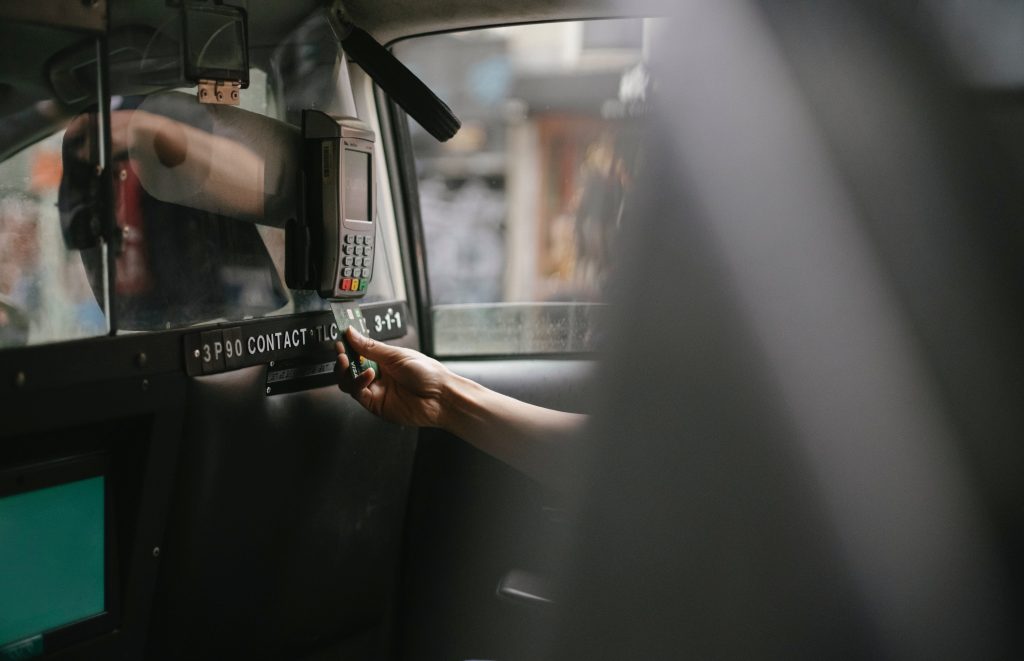
STAY HOME WHEN APPROPRIATE
To minimize the risk of spreading or contracting the virus, do not go out unless it’s necessary. If you’re experiencing possible symptoms of COVID-19 like fever or cough, seek medical attention by calling your doctor first, says the CDC. If you really need to go out for medical care, traveling via ambulance or private vehicle is advised; the use of public transportation must be avoided unless it’s your only option. The CDC also suggests that if it’s not an emergency medical situation, schedule an appointment beforehand and head out during non-peak hours. Non-essential travel should be avoided to protect individuals who are at risk for severe illness.
“People who are sick, have tested positive for COVID-19, or who have recently had a close contact (closer than 6 feet for at least 15 minutes combined over a 24-hour period) to a person with COVID-19 should not use transportation options that may put them in close contact with others (for example, public transit, rideshare, or taxis) and should stay home except to seek medical care,” says the CDC.
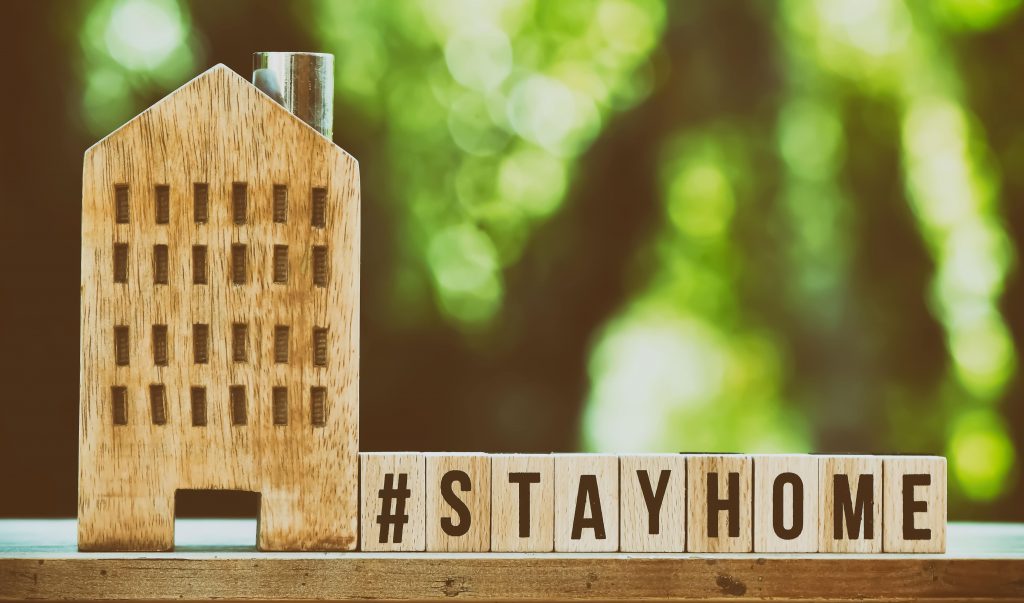
ALWAYS BE INFORMED OF THE LATEST GUIDELINES
Regularly keep yourself up-to-date with the latest news, information and requirements in using public transportation wherever you’re located. As the government’s quarantine classifications can change over time, some procedures and protocols may be updated as well. For everyone’s safety, follow the guidelines enforced by your local transport authorities when commuting via public transit.
Aside from these safety tips, make sure to plan the time that you will spend outside your home well and take shorter trips if necessary to lower the risk of contracting the virus. Having a home that’s strategically located near hospitals, schools, malls and other commercial establishments where you can get your essential needs is also an advantage. Furthermore, it will be very convenient to live in a community where public transport like trains is accessible to make your daily commute during and after the pandemic easier.
If you’re looking for your new home in the metropolis, an affordable condo for sale in Caloocan may be the right one for you and your family.
Commuting to other parts of Metro Manila is projected to be smooth and manageable as residents from the northern part of Caloocan will soon have access to the Metro Rail Transit Line 7. Once the 63-billion project is finished, Camella Manors Caloocan will just be 15 minutes away from the Mindanao Avenue Station of MRT-7, which will link North Avenue in Quezon City to San Jose del Monte, Bulacan. The infrastructure project being built by SMC-Mass Rail Transit 7, Inc. is expected to open by December 2022.
Business World also reported last February that partial operations between North Avenue Station (Quezon City) and Sacred Heart Station (Caloocan City) are poised to happen by December this year.

EXPLORING THE NEW SIDE OF CALOOCAN CITY
If a resort-style condo perfectly fits your taste and lifestyle needs, consider investing in Camella Manors Caloocan, the first mixed-use condo development in North Caloocan nestled at the heart of Camarin Road.
The condo for sale is within striking distance to lifestyle centers, business hubs, and other major establishments in the city.
This pre-selling condo in Caloocan is only two minutes away from Caloocan City North Medical Center, 10 minutes away from SM City Fairview and Ayala Fairview Terraces and 10 minutes away from National University Fairview and Our Lady of Fatima University-Lagro.
The 2.5-hectare project includes five residential towers with 15 storeys each. This resort-themed condominium also has its own commercial complex and lovely amenities like a swimming pool, clubhouse, function hall, fitness gym, playpark, jogging path, garden roof deck and 24/7 security.
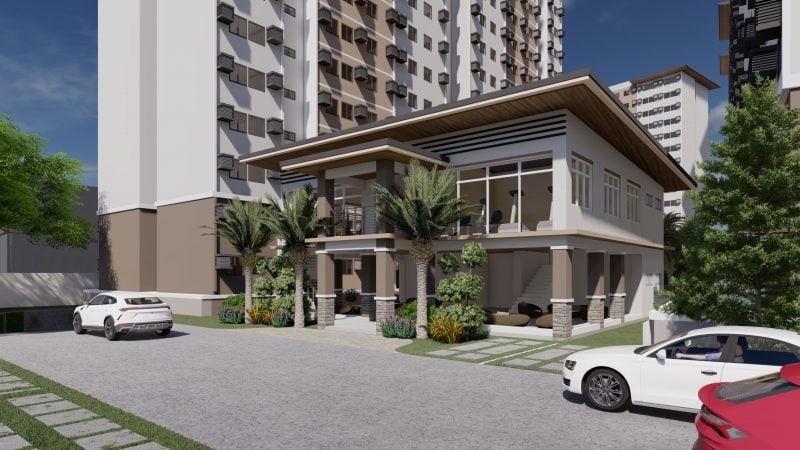
Camella Manors Caloocan currently offers studio units at 23.76 sq.m. and 28.55 sq.m. and one bedroom-type units at 30.36 sq.m. The first tower is set to be completed in 2024.
The strategic location of Camella Manors Caloocan in the National Capital Region will be beneficial to those who are searching for property investment in the Philippines as it entails a wealth of business opportunities. Since the residential property is tucked in one of the most populous cities in the country, the property’s market value is potentially high.
The historical city of Caloocan, a highly urbanized city, is a preferred settlement in Metro Manila and an attractive investment destination because of its growing industrial and commercial centers, not to mention its big residential area. Its proximity to the Philippines’ capital city (Manila) is also a plus factor.
Camella Manors offers an online reservation process, where the completion of reservation forms and payment of reservation fees can be done virtually to make it more convenient and safe for the buyers.
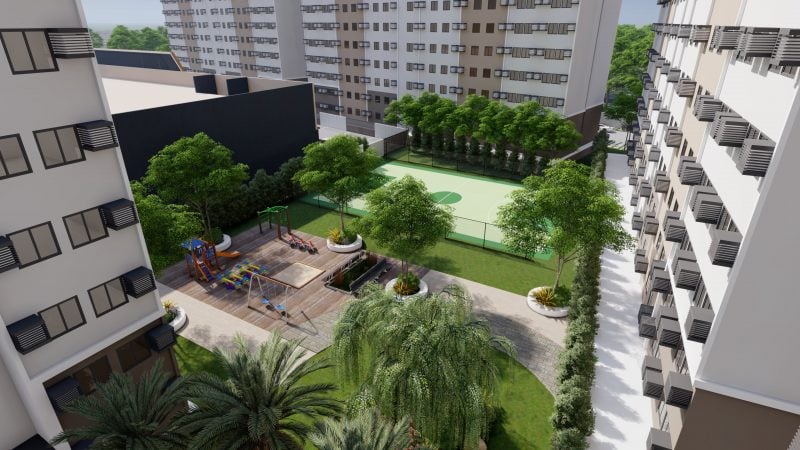
For additional information and inquiries about the real estate investment, please click here. An on-site or online tour of the pre-selling condo unit can also be scheduled to further discuss the details.
Invest in Camella Manors Caloocan now!

